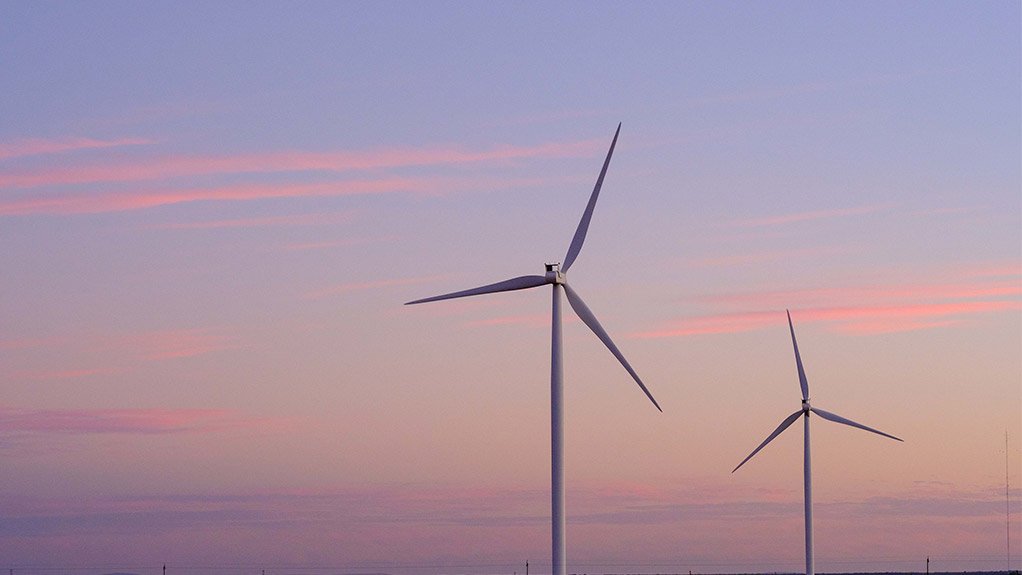The South African Wind Energy Association (SAWEA) has called for the immediate release of available wind power into the national grid, as the country continues to face daily load-shedding.
After days of implementing Stage 1 to Stage 4 power cuts, State-owned Eskom on Monday evening implemented unprecedented Stage 6 power cuts after the heavy rainfall in some areas of the country exacerbated the already constrained power supply situation.
Eskom explained in a statement that the Stage 6 load-shedding was declared as a result of failed units at the Medupi power station, flooding at the Kriel mine and flooding at the Camden power station.
The power utility late on Monday scaled back to Stage 4 load-shedding and, on Tuesday, said that at 05:43 breakdowns were at 15 200 MW. It was working to reduce unplanned breakdowns to below 9 500 MW and to stop load-shedding by next week.
It pointed out that the probability for load-shedding remained high for the remainder of this week.
The power cuts have resulted in a number of mining companies, including diamond miner Petra Diamonds and gold miner Harmony Gold, halting operations following requests by Eskom and over safety concerns for mine employees working underground.
President Cyril Ramaphosa on Monday acknowledged the “devastating” impact of load-shedding on the economy. Economists have warned that the latest round of load-shedding may push South Africa into a recession.
In light of the ongoing electricity supply constraints, which is unlikely to be resolved soon, the South African Photovoltaic Industry Association on Monday called for government to enable a greater contribution from small-scale embedded generation.
SAPVIA indicated that up to 2 000 MW of SSEG could be added to the energy mix in the next year if government removed the barriers that delay the licensing of projects above 1 MW.
SAWEA, meanwhile, is proposing the lifting of maximum export capacity on all operating wind farms. Currently, wind farms can only export the pre-agreed maximum capacity into the grid and have to curtail any additional capacity.
The association says about 500 MW of excess capacity is available.
The association adds that the additional energy can be bought at a cost as low as 40c/kWh.
“These can also be short-term contracts that can be signed in this interim capacity constraint period and it does not have to be viewed as long-term commitments,” comments SAWEA CEO Ntombifuthi Ntuli.
Additionally, the association suggests that government allow industry to fast-track wind farms that are being built, to allow power supply to Eskom before the scheduled commercial operation dates.
“SAWEA views load-shedding as a clear symptom of the Eskom fleet’s reduced electricity availability factor, which indicates an urgent need to procure new generation capacity in order to bring the available factor to healthy levels again.
“However, this may not be fast enough to close the short-term capacity challenge highlighted by the Mineral Resources and Energy Minister recently, which is why the industry is posing short-term solutions while the industry waits for the green light to start constructing new wind farms,” said Ntuli.
SAWEA says load-shedding is costing the country more than R2-billion a day.
Energy analyst Chris Yelland explains that Stage 2, or 2 000 MW, of load-shedding for 14 hours a day results in unserved energy of 28-million kilowatt-hours a day.
Using a cost of unserved energy of between R15/kWh – as indicated by Eskom – to R75/kWh – as indicated by the National Energy Regulator of South Africa case study – comes to a loss in the economy of between R420-million and R2.1-billion a day.
“This means that 2 000 MW of installed wind capacity operating at a capacity factor of 0.35 during the assumed 14-hour Stage 2 load-shedding a day would save the economy between R147-million and R735-million a day.”
EMAIL THIS ARTICLE SAVE THIS ARTICLE ARTICLE ENQUIRY
To subscribe email subscriptions@creamermedia.co.za or click here
To advertise email advertising@creamermedia.co.za or click here











